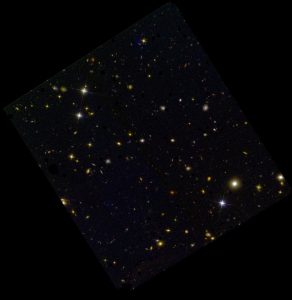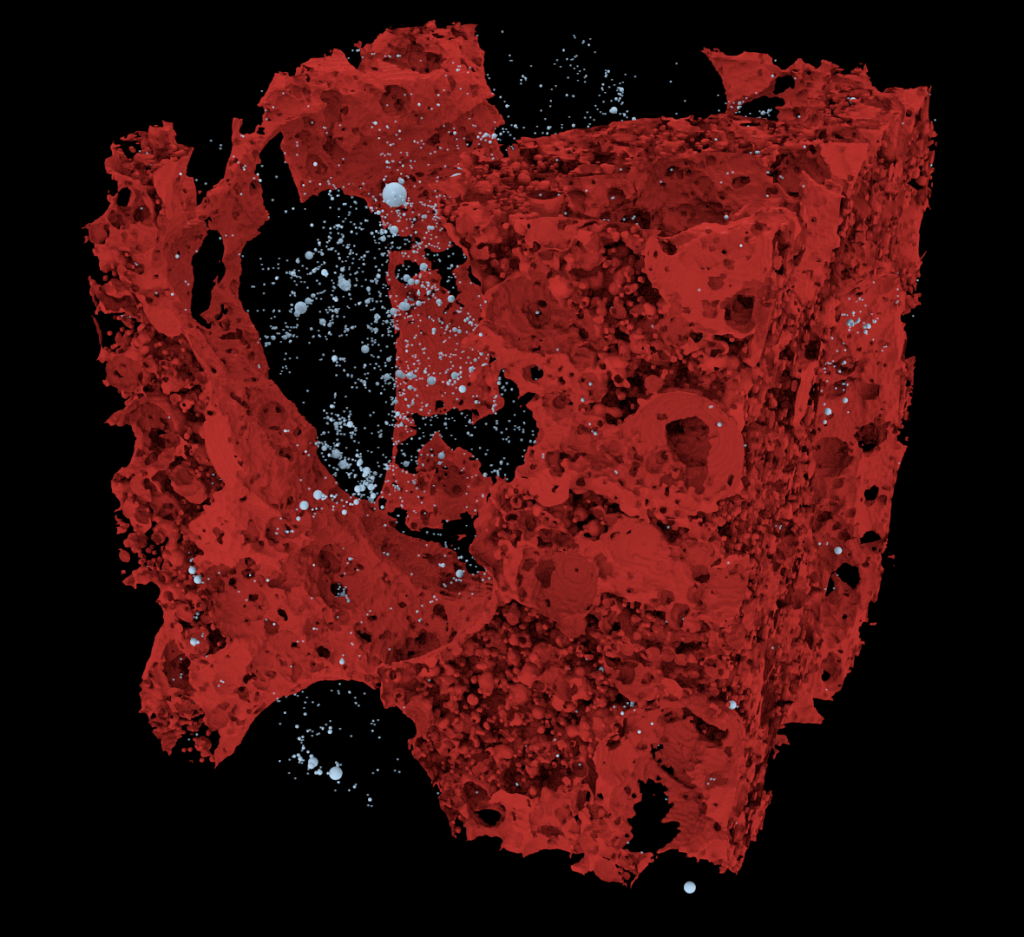Epoch of Reionisation
Epoch of Reionisation
The quest to try and understand how the Universe came to look the way it does lies at the heart of astronomy. However when viewing the Universe from a historical perspective astronomers are immediately faced with fundamental unanswered questions. We believe the Universe has a finite age, and as a result, that there must have been an epoch when galaxies appeared for the first time. However we do not know how this first generation of galaxies formed. We do not know what they looked like, or how big they were. Indeed, we do not even know when galaxies first played an important role in the evolution of our Universe.
Over the last decade the composition of the Universe has been determined to high accuracy. Understanding the first galaxies now represents the next great challenge for observational cosmology. Currently, our knowledge of the first galaxies is currently limited to two primary facts. Astronomers believe that our Universe began with the “Big Bang”, after which the initially very hot Universe expanded and cooled. When the Universe cooled sufficiently that the gas of protons and electrons “recombined” to form atomic hydrogen, light was able to travel freely for the first time. We observe this light today as a diffuse glow on the sky known as the Cosmic Microwave Background, which describes the state of the Universe 380,000 years after the Big Bang. Small ripples of density observed at this time grew under the influence of gravity, forming the sites of modern-day galaxies some 13.7 billion years later. Some of the atomic hydrogen in the early Universe formed stars within galaxies, but most is located in the space between galaxies. The current belief is that the first galaxies appeared a few hundred million years after the Big Bang, resulting in a large UV flux that reionised hydrogen in the Universe. The time when galaxies first became important can be defined as the instant when the combined galaxies in the Universe had produced enough ultra-violet light to reionise all of the hydrogen. Astronomers refer to this as the end of the Dark Ages of the Universe.

There are several key observational areas in which substantial progress will be made in the study of the first galaxies during the coming decade. The first of these are forthcoming programs, with an emphasis on obtaining data beyond the current redshift, or distance frontier, using new surveys and instruments. Following the success of the Hubble Space Telescope (HST), the flagship James Webb Space Telescope (JWST) is scheduled for launch in 2014. JWST is a large infrared optimised telescope that will be used to search for the high redshift galaxies thought to be responsible for the reionisation of the intergalactic hydrogen.
The advent of 30-meter class optical/IR telescopes in the next decade, such as the Giant Magellan telescope (GMT), will open a new window on the Universe allowing spectra to be taken of the earliest forming galaxies discovered with JWST. Much emphasis is also based on experiments to measure the redshifted 21 cm radio signal (Furlanetto et al. 2006; Morales & Wyithe 2010), which may provide the first direct probe of the neutral hydrogen in the high redshift Universe.
Radio telescopes such as the Murchison Widefield Array (MWA, now beginning to take data in Western Australia), will lead efforts in this exciting new field. Next generation ground-based surveys such as SkyMapper (Keller et al. 2007), will discover high redshift quasars, thus providing valuable additional targets for studies of the intervening intergalactic hydrogen using quasar absorption spectroscopy.
Finally, the Planck surveyor and other cosmic microwave background experiments will provide tighter limits on fundamental cosmological and astrophysical parameters, providing better constraints on the integrated ionisation history of the IGM. The goal of these observations will be to elucidate the physical history and origin of the first galaxies, which can only be achieved within a sophisticated physical framework.
Within this context, the development of theoretical models that include detailed physics of galaxy formation and intergalactic hydrogen will therefore play a key role. At the highest redshifts astronomers have only theoretical predictions to guide knowledge of the first galaxies and their interaction with intergalactic hydrogen prior to reionisation. Further developing these theoretical models and utilizing them in combination with observational data to better understand the evolution of the IGM during the Epoch of Reionisation underpin the proposed science program within the Astrophysics group.
Supervisor Profiles & Available Research Projects
Dr. Michele Trenti
- First stars and galaxies (observations, modeling)
- Gamma Ray Bursts as tracers of star formation during the epoch of reionization
Prof Rachel Webster
- Galaxy formation
- Large-scale structure and cosmology

- Using Asteroseismology to Measure an Integrated Mass Loss for Evolved Stars in Globular Clusters Wednesday 14 Sep 2022 @ 12:00 p.m., Level 6 Geoff Opat([...]
- Understanding X-Ray Signatures of Outflows Through 3-D Simulations Wednesday 07 Sep 2022 @ 12:00 p.m., Level 6 Geoff Opat([...]
- Orbital structures of SAMI passive galaxies from orbit-superposition Schwarzschild models. Wednesday 31 Aug 2022 @ 12:00 p.m., Laby Theatre(+Zoom)[...]
- On Modelling Complex Systems in Astronomy Wednesday 17 Aug 2022 @ 12:00 p.m., Laby Theatre(+Zoom)[...]
- Hydroxyl as a Probe of the Interstellar Medium Wednesday 10 Aug 2022 @ 12:00 p.m., Zoom Dr Anita Petzl[...]
- How do galaxies regulate their own star formation? Wednesday 03 Aug 2022 @ 12:00 p.m., Laby Theatre(+Zoom)[...]
- Leaks and bursts Wednesday 27 Jul 2022 @ 12:00 p.m., Laby Theatre(+Zoom)[...]